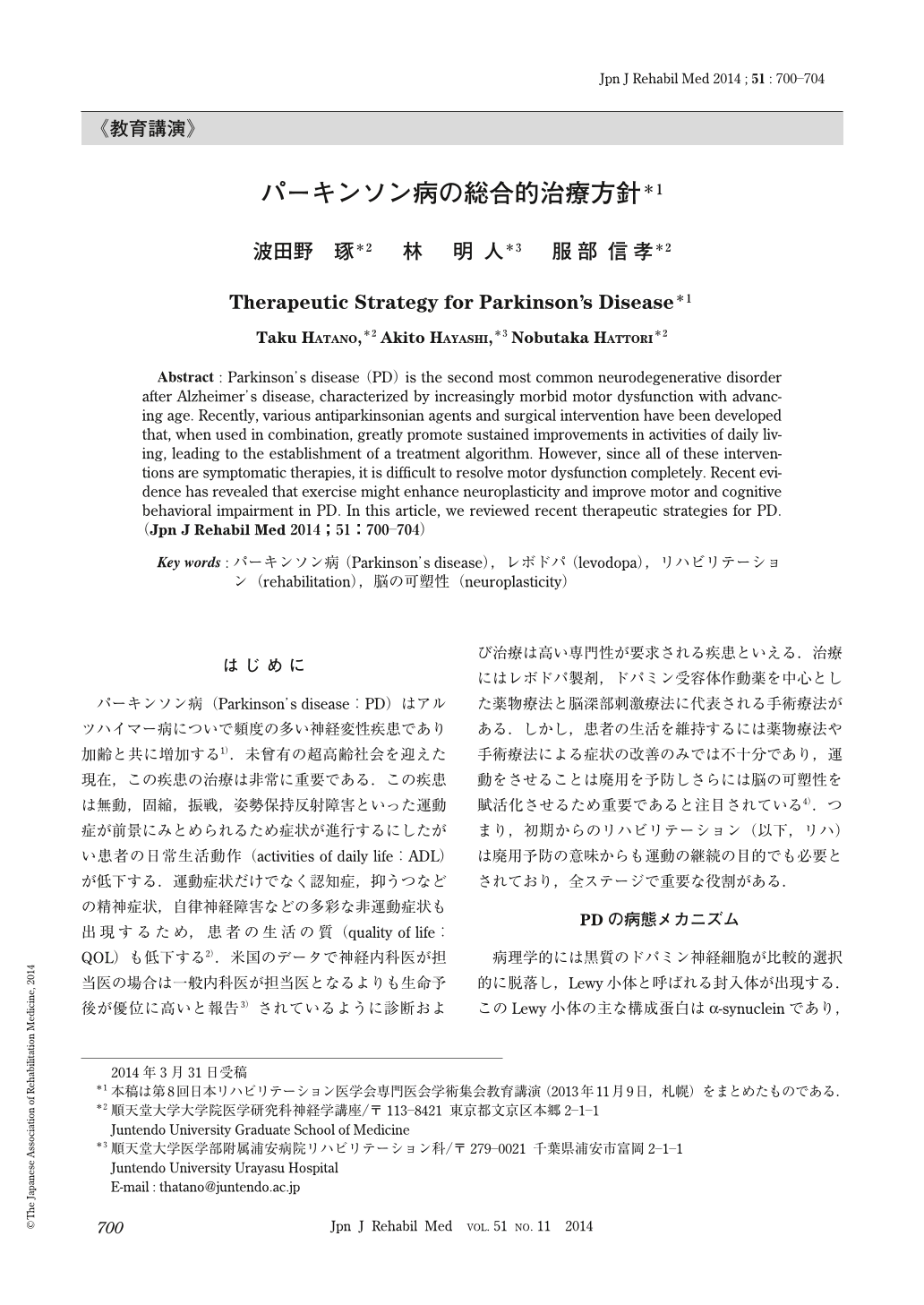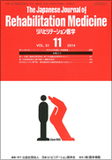Japanese
English
- 販売していません
- Abstract 文献概要
- 1ページ目 Look Inside
- 参考文献 Reference
はじめに
パーキンソン病(Parkinson's disease:PD)はアルツハイマー病についで頻度の多い神経変性疾患であり加齢と共に増加する1).未曾有の超高齢社会を迎えた現在,この疾患の治療は非常に重要である.この疾患は無動,固縮,振戦,姿勢保持反射障害といった運動症が前景にみとめられるため症状が進行するにしたがい患者の日常生活動作(activities of daily life:ADL)が低下する.運動症状だけでなく認知症,抑うつなどの精神症状,自律神経障害などの多彩な非運動症状も出現するため,患者の生活の質(quality of life:QOL)も低下する2).米国のデータで神経内科医が担当医の場合は一般内科医が担当医となるよりも生命予後が優位に高いと報告3)されているように診断および治療は高い専門性が要求される疾患といえる.治療にはレボドパ製剤,ドパミン受容体作動薬を中心とした薬物療法と脳深部刺激療法に代表される手術療法がある.しかし,患者の生活を維持するには薬物療法や手術療法による症状の改善のみでは不十分であり,運動をさせることは廃用を予防しさらには脳の可塑性を賦活化させるため重要であると注目されている4).つまり,初期からのリハビリテーション(以下,リハ)は廃用予防の意味からも運動の継続の目的でも必要とされており,全ステージで重要な役割がある.
Abstract : Parkinson's disease (PD) is the second most common neurodegenerative disorder after Alzheimer's disease, characterized by increasingly morbid motor dysfunction with advancing age. Recently, various antiparkinsonian agents and surgical intervention have been developed that, when used in combination, greatly promote sustained improvements in activities of daily living, leading to the establishment of a treatment algorithm. However, since all of these interventions are symptomatic therapies, it is difficult to resolve motor dysfunction completely. Recent evidence has revealed that exercise might enhance neuroplasticity and improve motor and cognitive behavioral impairment in PD. In this article, we reviewed recent therapeutic strategies for PD.

Copyright © 2014, The Japanese Association of Rehabilitation Medicine. All rights reserved.


